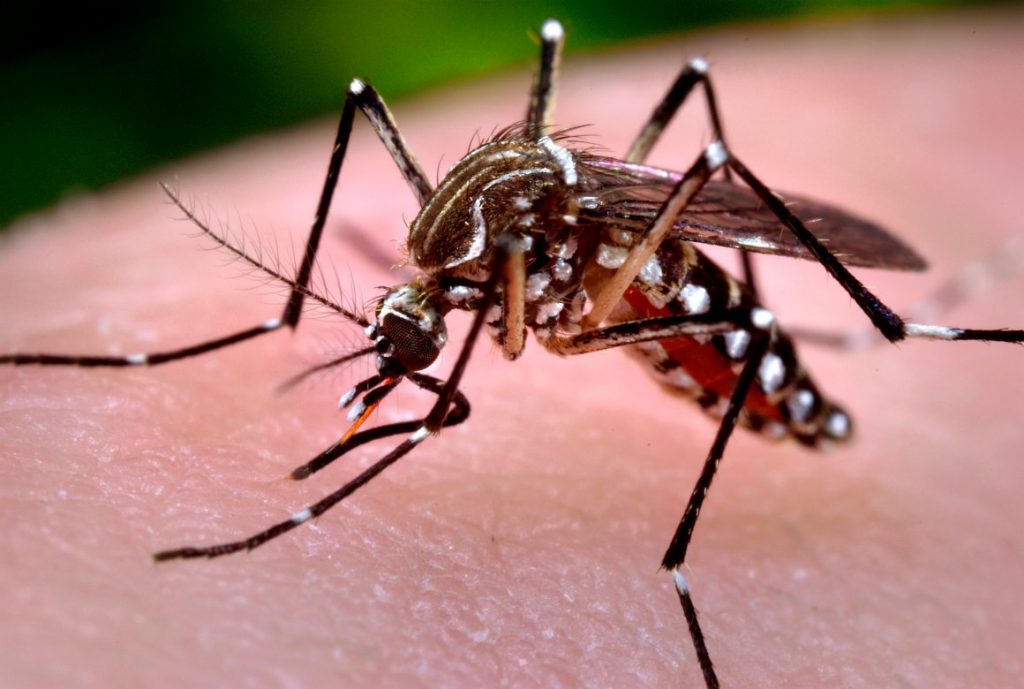A dangerous invasive mosquito has been caught in Gilroy, and the Santa Clara County Vector Control District is asking residents for help to keep the species from gaining a foothold in the South Bay.
Though the mosquito was detected early, it belongs to a disease-carrying species, Aedes aegypti, which bites aggressively and can pose a serious public health risk if it finds a foothold in the region.
“We found it early, we detected it early, and now we’re doing a robust treatment to ensure that the Aedis aegypti does not get established in the Gilroy area,” said Edgar Nolasco, Consumer and Environmental Protection Agency Director for Santa Clara County. “If it does get established, we’re facing much greater danger at that time.”
The mosquito isn’t native to California — though the species has become established throughout the south and center of the state. Unlike most native species, Aedis aegypti is active at all times of the day, bites multiple times, and can carry Zika virus, dengue, yellow fever, or chikungunya.
While these diseases are rarely found in California, the county has received reports of occasional cases among returning travelers. None were detected in the captured mosquito.
The mosquito in Gilroy was trapped earlier this month near Hanna Street and West 10th Street. The location is of special concern since it is near multiple schools.
Nayer Zahiri, Vector Control District Manager for Santa Clara County, noted that eggs can lay dormant over the cooler months through extreme temperatures. That means that there is a risk that if the species is not eliminated ahead of the winter, some eggs might hatch next year.
County workers are conducting inspections of properties for mosquito larvae and standing water and trapping adult mosquitoes. Later this weekthey will apply pesticides meant to target the larvae of the species so that it does not reproduce. Afterwards, the county will continue to monitor the situation and conduct more treatments as needed.
The species was also previously identified in East San Jose in April; while county officials say that the population is under control, the efforts to eliminate the species there are ongoing.
“It’s a really hard battle ensuring that it doesn’t get established,” said Nolasco. He says the district plans to be more aggressive now with efforts in Gilroy to nip the species in the bud.
Related Articles
Gov. Gavin Newsom signs law ending “paper or plastic?” at grocery store checkouts
Elk return to the Sierra, their long-ago home?
Unplanned flaring at Martinez refinery reported Saturday
Sinkholes, and mines below, imperil South Dakota neighborhood
Photos: 40th Annual Coastal Cleanup – California’s largest annual volunteer event
In both cases, the county hopes to enlist local residents in eliminating the mosquitoes so they do not spread further.
“We can do all the treatment we want, but the real collaboration comes with the community doing their part,” said Nolasco.
Nolasco said the most important step is eliminating any standing water, where the mosquitoes breed, and closing or covering any containers that might collect standing water outside.
The insects are about a quarter-inch long and are recognizable by the black and white stripes on their legs and bodies, and their eggs are tiny, appearing like bits of dirt to the naked eye. The eggs can also survive for a year without water — even through winter temperatures, so cleaning or scrubbing any containers that have eggs can help remove them.
More information on the invasive mosquitoes is available at county and state websites.
County officials will hold a meeting at 6 p.m. Thursday in the cafeteria at Gilroy High School at 750 W. 10th St. to share information and answer resident questions.
Officials ask that residents experiencing mosquito bites during the day report them to the Vector Control District at 408-918-4770 or [email protected].


